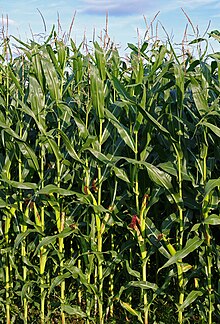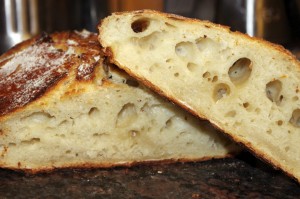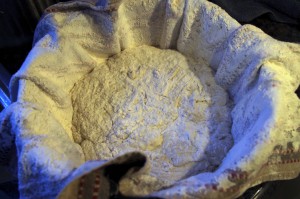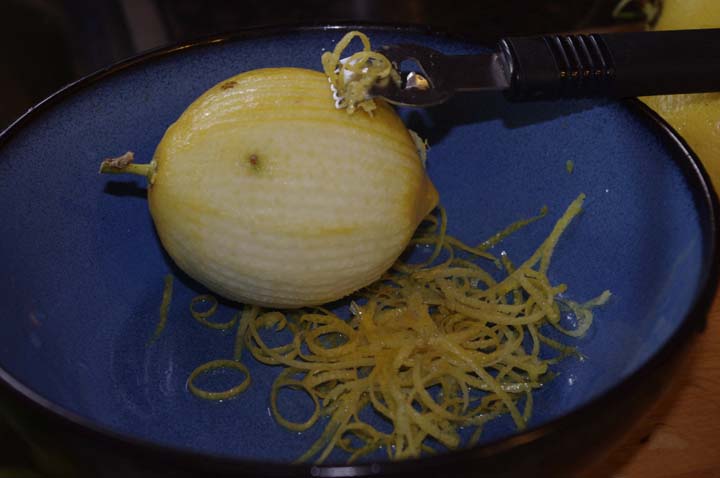One of the primary arguments the pro-GMO side likes to make is that people have been messing with the genetics of plants for thousands of years through hybridizing and GMOs are no different. Actually they are better, because the change in genetic information is controlled. Surprisingly, a lot of people are duped by this excuse so let's set the record straight.
First, lets discuss what hybridization means. Hybridizing means you take two organisms of the same species with desirable traits and breed them together. Some of the offspring that result will have those desirable traits. First generation hybrids or F1 hybrids are the resulting offspring. They have desirable traits but they may not all breed true for the next generation (F2), but some will and those will be chosen for the next breeding (F3). Eventually the traits stabilize. With plants this means you now have a stable open pollinated variety that will always breed true.
Hybridization can occur between different species (called hybrid speciation). In the case of equines (genus: Equus), you can breed two different species together, a horse (Equus ferus caballus) and a donkey (Equus africanus asinus), but the offspring, a mule, will be sterile and cannot reproduce. Some hybrid speciation can result in fertile offspring which can lead to a new species, however, in nature this is rare. Again, however, the genus must be the same for this to occur.
GMOs are different. GMOs are the genetic mashup of two organisms that are completely unrelated - most times they aren't even in the same kingdom. I say mashup because it is actually not a controlled insertion of genes from one organism into another. For the most part, it's completely random with mixed results. The resulting offspring might end up with the desired trait but it is unknown what other traits have come along for the ride or got messed up in the process.
Scientist can isolate the genetic traits of the species they want to insert into the crop. Most of the time that is about as controlled as it gets. They take this genetic material and insert it into another species through one of several different ways. They can either use viruses, bacteria, syringes or a gene gun to get that material into the nucleus of a cell. Here's some more info:
The process of insertion is uncontrollable and entirely random. The genetic engineer cannot yet target the insert to a specific site in the genome, nor preserve the intended structure of the insert itself. This results in many unpredictable and unintended effects. Depending on where in the genome and in what form the foreign genetic material is inserted, the resultant GMO will have distinctly different properties. The insert could jump into a gene of the host and disrupt its function, or the strong promoter signals in the construct could lead to inappropriate over-expression of host genes. - Institute of Science in Society
The two GMOs that are the most ubiquitous in our food supply are Bt and Roundup Ready GM crops. Corn, soy, cotton, canola and sugar beets are the most prevalent. Bt crops are crops that have had genetic material from Bacillis thuringiensis (Bt) inserted into their DNA. Bt is a naturally occurring soil bacterium. It produces a toxin that dissolves the digestive tract of caterpillars. Bt can be used as a pesticide on organic crops. It is unstable in sunlight and degrades rapidly - within a few hours - after being applied. Bt crops, however, produce this toxin systemically - inside every cell of the plant for the entire life of the plant. The toxin cannot be washed off and it does not degrade. The FDA doesn't label it because it considers it to be a pesticide with is the job of the EPA to label. The EPA won't label it because they consider it food. It's enough to make your head spin.
Roundup Ready Crops (RR) are crops that are resistant to the herbicide Roundup, also known as glyphosate. Glyphosate is a systemic herbicide meaning it's absorbed into the plant that is sprayed with it. These crops were produced by inserting genetic material from a bacterium found near a glyphosate production factory. Like the Bt crops, the pesticide is systemic and cannot be washed off so when you eat RR crops you're also ingesting the herbicide they were sprayed with.



























